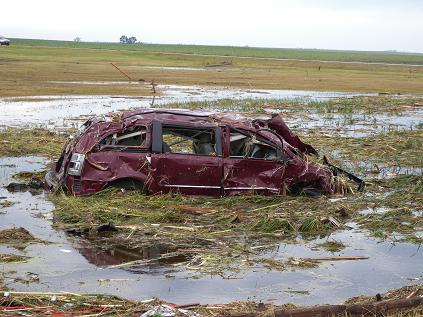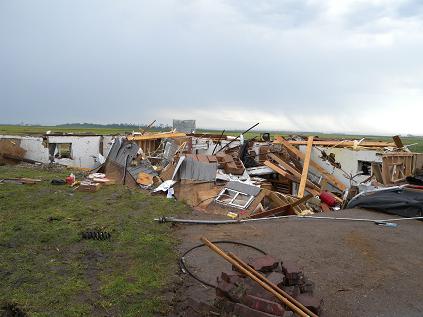Here’s something to keep in mind: First and foremost, if a house that has a foundation built with nuts, bolts, and appropriate-sized washers is swept away, leaving only the concrete foundation, the “expected value” of wind in the Enhanced Fujita Scale is 200 mph, which puts it at the top of the EF4 category, not an EF5. It would have to be an exceptionally well-built house to go over 200 mph and thus achieve an EF5.
It’s my understanding that when the Enhanced Fujita Scale was put together this was done for a very specific reason — that some on the committee felt that a house should never be rated EF5. The final outcome was that the “expected value” was placed so that it would be very rare that a house could be rated EF5.
Note that, whether the rating was EF4 or EF5, it would be expected that the house would be destroyed.
So, for the house in Vilonia that came closest to exceeding EF4, we also followed a couple of other “rules” that we use in assessing tornado damage.
First, one structure should not be used to determine a rating. Second, there were still some tall, skinny trees standing along a drainage ditch/small creek about 100 yards away from the house. I have seen something like this in the past, and the expert rated lower because of vegetation that was still standing nearby. To put it another way, the people doing the rating are supposed to take into account the entire scene, not just one thing in the middle of it.
Another thing that has been debated considerably: When a structure has been hit by a large amount of debris, how much of the damage was truly from the tornado itself vs. the amount of damage that was caused by flying debris from other structures?










